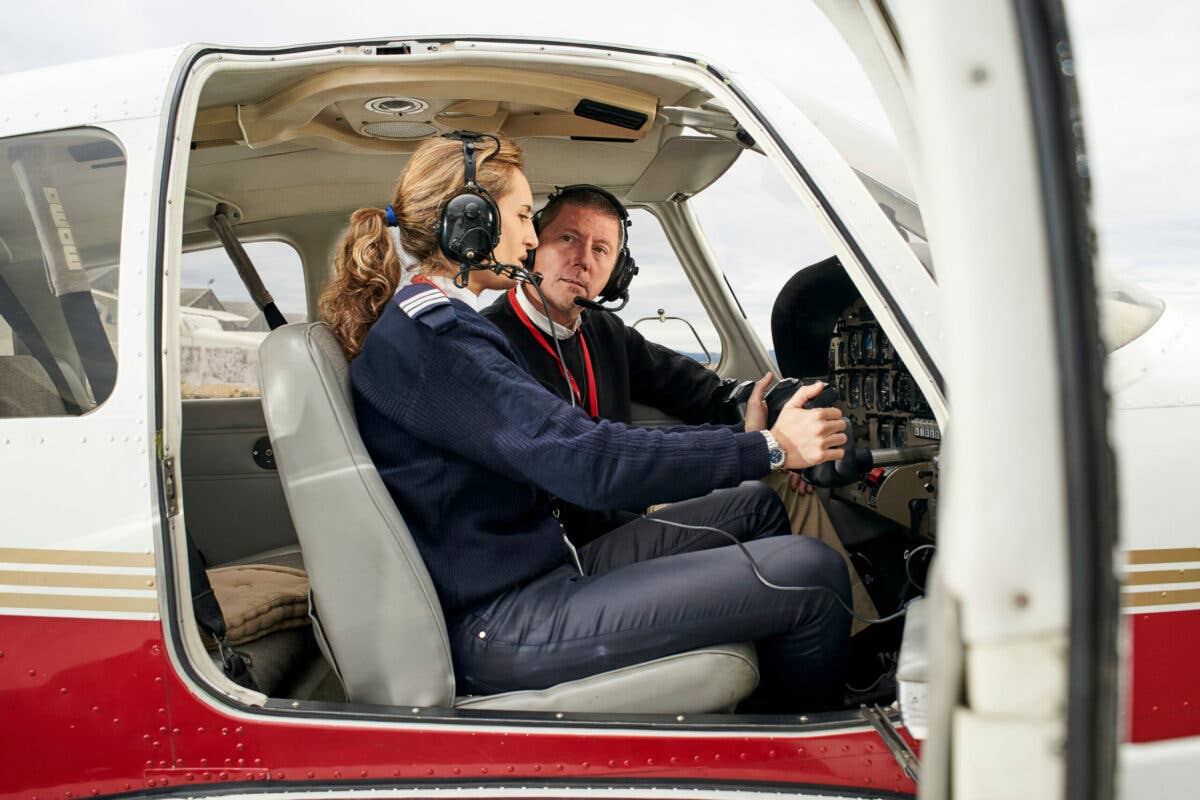Redbird: Learning to Fly Has Gotten More Expensive
The cost of training for a private pilot license (PPL) this year will cost an average of $1,500 more than in 2023, according to the company’s survey findings.

At least 83 percent of active students did their training at one flight school with more than one primary CFI, according to the Redbird survey. [Credit: Shutterstock]
Are you actively enrolled in flight training? What do you think of the experience so far?
Redbird Flight Simulations asked questions along these lines for its annual report on the state of flight training.
Redbird's 2024 report was culled from survey responses that included questions about the frequency of training flight, use of a syllabus, and how busy flight schools are to name a few.
The report consulted CFIs who work at flight schools from the mom-and-pop variety with a handful of "seasoned" trainers to the larger academy style with 20 or more later model aircraft.
This year 1,701 people responded to the survey, representing a 57 percent increase over 2023.
Student pilots were put into three categories: active, lapsed (have not flown within three months), and prospective. Active pilots were defined as a certificated pilot who has flown in the past 12 months but isn't receiving training toward a new certificate or rating.
The survey took information from student pilots, lapsed and prospective pilots, flight instructors, and designated pilot examiners.
Among the findings, according to the 27-page report, are that flight schools are busier than they have been before—so much so that some have waitlists. Of those surveyed, 70 percent received flight training, 49 percent received ground training, and 18 percent received a new rating or certificate.
The survey found the cost of training has increased—you're looking at $14,000 for a private pilot license (PPL), taking an average 24 weeks. Last year, training costs for a PPL averaged $12,500. According to the report the most expensive certificate is the commercial pilot license (CPL), costing $15,000 and requiring an average training time of 18 weeks.
According to the survey, 48 percent of the pilots flew one to 50 hours in the past year, and 28 percent 50 to 100 hours.
At least 83 percent of the active students did their training at one flight school with more than one primary CFI, and 57 percent were on the professional pilot track.
- READ MORE: FLYING's Flight School Guide
When asked to rate their CFIs on a scale of 1 to 5, the average rating was 4.3 while the flight schools received a 3.6.
The survey also asked about the use of simulation technology for flight training. According to respondents, students and prospective students placed a higher value on its use than many instructors.
The survey also took note of the challenges facing flight training. Both flight schools and independent CFIs noted they had concerns about aircraft insurance, maintenance challenges, and pilot examiner availability. The schools also reported some concerns about finding and hiring qualified flight instructors.
The report did not address CFI turnover. This can have a dramatic impact on the quality of instruction given, as it takes awhile to learn to be an effective teacher. According to the Society of Aviation and Flight Educators and the National Association of Flight Instructors, many CFIs actively teaching have less than a year of experience as flight instructors.
The Redbird survey also determined that getting CFIs to use a syllabus is still a challenge as 32 percent of the learners surveyed said their CFI didn't use one.
Designated Pilot Examiners (DPE) were also included in the survey. The average number of applicant tests conducted in one year by full-time DPEs was 245, while part time DPEs did 130 tests. When asked about the quality of applicants as compared to five years ago, 45 percent of the DPEs stated the applicants were worse and cited a lack of preparation of the applicant followed by a lack of skill as the dominant factors in check-ride failures.
More information about Redbird's "The State of Flight Training" 2024 survey and report may be found here.

Subscribe to Our Newsletter
Get the latest FLYING stories delivered directly to your inbox






